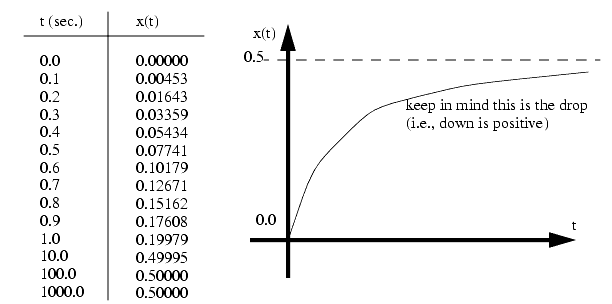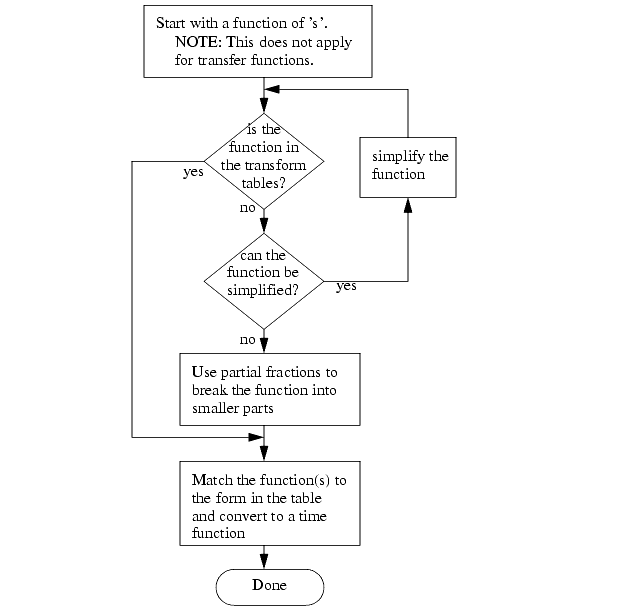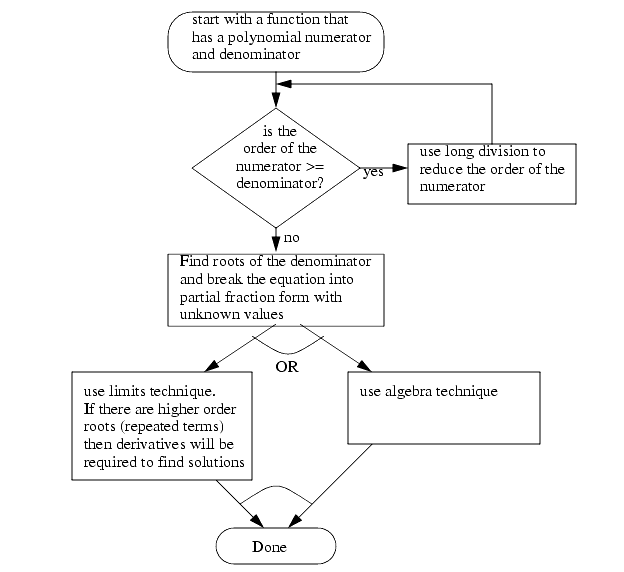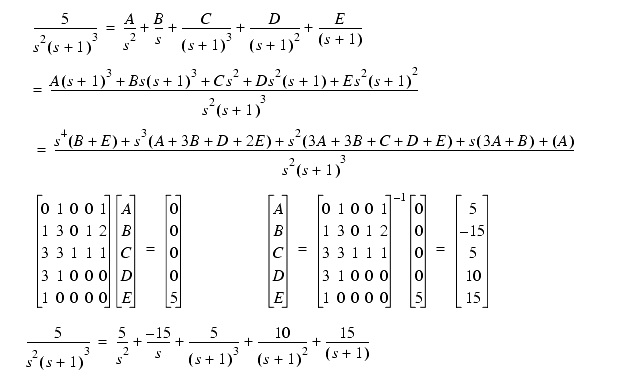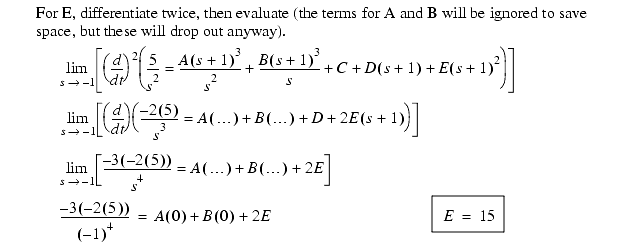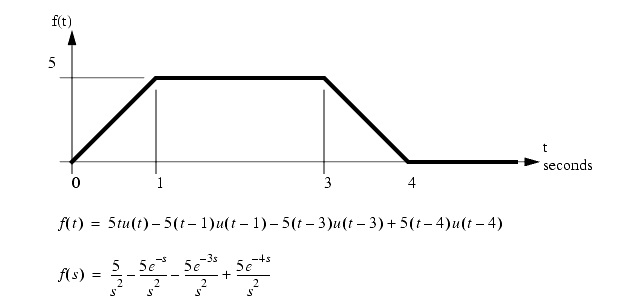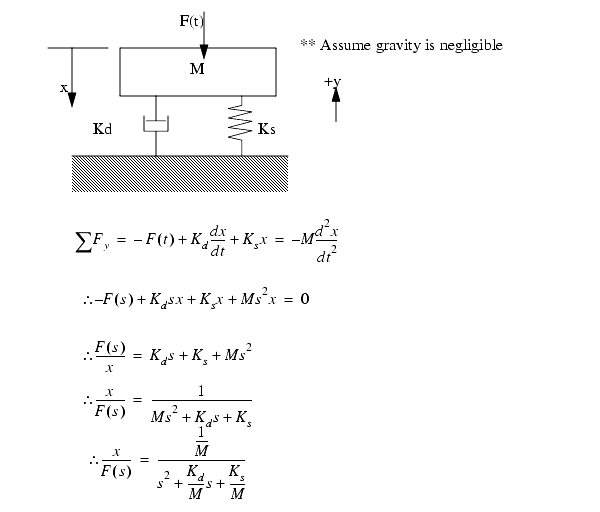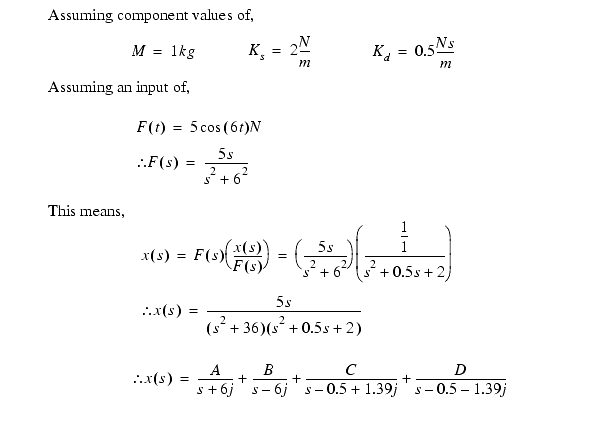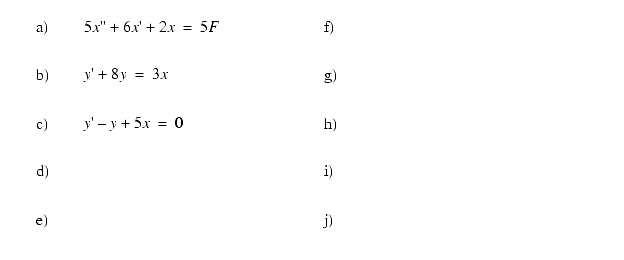16.4 USING LAPLACE TRANSFORMS
The differential equation is in the time domain. By doing a Laplace transform we can move the system into the frequency domain. This makes it much easier to solve complex convolution problems. Without this method, very complex integrals would be required.
Inputs must in the time domain must also be converted to the frequency domain.
Normally at this point we would have the input to the system, and the system differential equation. The convolution integral would be used to find the time response, but using Laplace transforms this becomes a simple substitution.
At this point we have `x' as a function of `s' (later we will see `s' is equivalent to frequency). We can find the initial, and final values (steady state) of `x' using the final value theorem.
All that is needed to get the time domain function is an inverse Laplace transform. This is quite often done by using partial fraction expansion of the equations, followed by Inverse Laplace transforms of the simpler parts.
The terms from the partial fraction expansion are put through an inverse Laplace transform using a lookup table. (A sample table is given later)
Some numbers can be calculated to verify this,
Note that the damper is relatively larger than the spring, therefore no "oscillation".
What if the damping approaches 0?
16.4.1 Solving Partial Fractions
The following is a flowchart that shows the general method for doing inverse Laplace transforms.
The next is a flowchart for partial fraction expansions.
The partial fraction expansion for,
Consider the example below where the order of the numerator is larger than the denominator.
When the order of the denominator terms is greater than 1 it requires an expanded partial fraction form, as shown below.
We can solve the previous problem using the algebra technique.
This problem can also be solved using the limits technique. But, because of the repeated roots we will need to differentiate to find the repeated roots.
We can prove the technique for the derivatives of the functions.
16.4.2 Input Functions
An example of a complex time function is,
16.4.3 Examples
These systems tend to vibrate simply. This vibration will often decay naturally. The contrast is the first order system that tends to move towards new equilibrium points without any sort of resonance or vibration.
To continue the example with numerical values,
Consider the circuit below,
16.4.4 Practice Problems
1. Convert the following functions from time to laplace functions.
2. Convert the following functions below from the laplace to time domains.
3. Convert the following functions below from the laplace to time domains using partial fractions.
4. Convert the following differential equations to transfer functions.
5. Given the following input functions and transfer functions, find the response in time.
6. Prove the following relationships.





